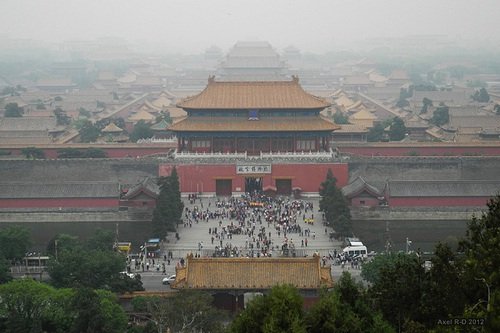近年来, 公众已愈加清晰地认识到北京污染问题的严重性,社会媒体为公众提供了一个发表言论的平台,对提高公众环境意识起到了至关重要的推动作用。公众通过微博(类似于美国的Twitter)要求政府采取行动减少污染和公开环境信息的呼声越来越强烈,去年年底前中国政府已在74座城市安装了PM2.5监测设备,提供PM2.5浓度实时数据。

除了让信息更加透明以外,北京市还采取了一系列措施来解决频发的污染问题,包括关闭工厂、减少上路车辆以及劝说市民在春节期间少放烟花。实际上,从去年开始,由于公众的环境意识和对空气污染关注度的提高,烟花爆竹的销售量已下降了45%。然而,元旦假期过后,随着人群返城,周末期间严重的雾霾再次回归。雾霾所造成的较差能见度,促使政府暂时关闭北京市及附近省份的高速公路,取消航班,并发布了雾霾“黄色”警报(当能见度少于500米,或0.3英里),许多人的出行计划不得不中断。
提高信息透明度以及其他的短期措施无疑都是正确的重要举措,但是抑制污染问题,需要能产生持续作用的长期措施,比如制定更加严格的国家燃料标准。因此,我们非常欣喜地看到北京市政府发布《北京大气污染防治条例(草案送审稿)》,并从1月20日至2月8日期间,向公众征求意见。该草案中包括了责令排污单位停产以及进一步限制上路机动车数量等措施。同时,该草案还禁止在北京市内新建或扩建特定高污染行业——如钢铁业,并且要求企业在其网站上公布排污信息。
自然资源保护协会对该草案进行了评阅,并向北京市政府提交了意见。我们坚信,环境信息公开和积极的公众参与是制定并有效执行环境法规的基础。我们恳请北京市政府加强这类原则,强化草案中的强制执行措施。以下是我们提出的十项主要建议:
1. 明确并强化公众参与的原则;
2. 增加环境公益诉讼的规定;
3. 明确和完善环境信息公开的规定;
4. 增加按日计罚的规定,加强对违法行为的处罚力度;
5. 增加废旧铅酸蓄电池回收处理的规定;
6. 严格控制燃煤总量;
7. 制定并实施严格的餐饮业油烟排放标准;
8. 制定并实施以人体健康为基准的更为严格的环境标准;
9. 建议制定更为全面的排污许可证制度;
10. 建立联席会议制度,明确部门之间的协调合作。
最为关键的一个要素是,北京市应当在有效执法上下功夫,即保障法律的实施与遵循。一方面,要完善现行法规中的法律责任条款。1987年,中国通过了一部全国性清洁空气法律(《大气污染防治法》)(分别于1995年和2000年修订)。遗憾的是,该法案处罚力度过低,不过近期立法机构正在对其重启修改。自然资源保护协会与我们的合作伙伴一道,基于对国际经验,包括美国《清洁空气法案》的分析,在加强执法力度等方面提供了修改建议。另一方面,要加强现有法规的执行。例如,在污染严重时,尽管北京市一再试图减少上路的公车数量,但是据1月30号的报道显示,有875辆公车违反禁令。可见,要做到令行禁止还需要更大的执法监督力度。
在美国,奥巴马政府仅在去年就实施了10项违反美国《清洁空气法》的民事处罚,罚金超过100万美金。然而在中国,排污单位不正常使用大气污染物处理设施,法定最高罚款仅为50,000元(7,653美金)。对于工厂来说,安装排污监控设备的费用远比罚款数额多得多,因此一些企业对环境法规不予理睬,有的宁愿缴纳罚款,也不愿遵守标准。环保人士马军认为,北京市的环保法规在实施执行方面将面临巨大挑战。我们建议,除了针对拒绝报告排污数据所处罚的15,000元罚款以外,还应对不守法的污染者“按日计罚”,并且不设定罚金上限。同时,我们还建议,对于没有完成环境影响评价以及未经批准的在建项目,应处以更高的罚款,以达到对违法者的震慑作用。
北京应采取的另一项重大的、合乎逻辑的措施是,加强健康基准作为制定标准的准则。北京年均细微颗粒物达到了90ppm,比美国洛杉矶最严重的污染程度60ppm,还要高出许多。一名中国学者发出这样的警告,空气污染远比SARS来得可怕,因为没有人能逃得过。据中国社科院估算,中国近期的雾霾已使8亿人口受到影响。其中,大城市的室外工作人群尤其易受影响。多达40%的交警被确诊患有鼻炎,23%患有咽喉炎。一般人群中分别有33%到50%的人群患有同样病症。
北京市持续恶化的空气污染非常明显,已成为老百姓街头巷尾谈论的话题。李克强副总理呼吁要有所作为,强调“解决环境污染问题需要一个长期过程”。虽然我们很高兴见到中国政府在该事件上,提高了信息公开力度和透明度,但是对政府和老百姓来说治理城市空气污染才是当务之急。我们建议北京市政府采取有效的空气污染控制法规,迅速、果断地遏制空气污染问题!
(本博客由环境法项目, 费楠茉 和 Christine Xu共同撰写)


